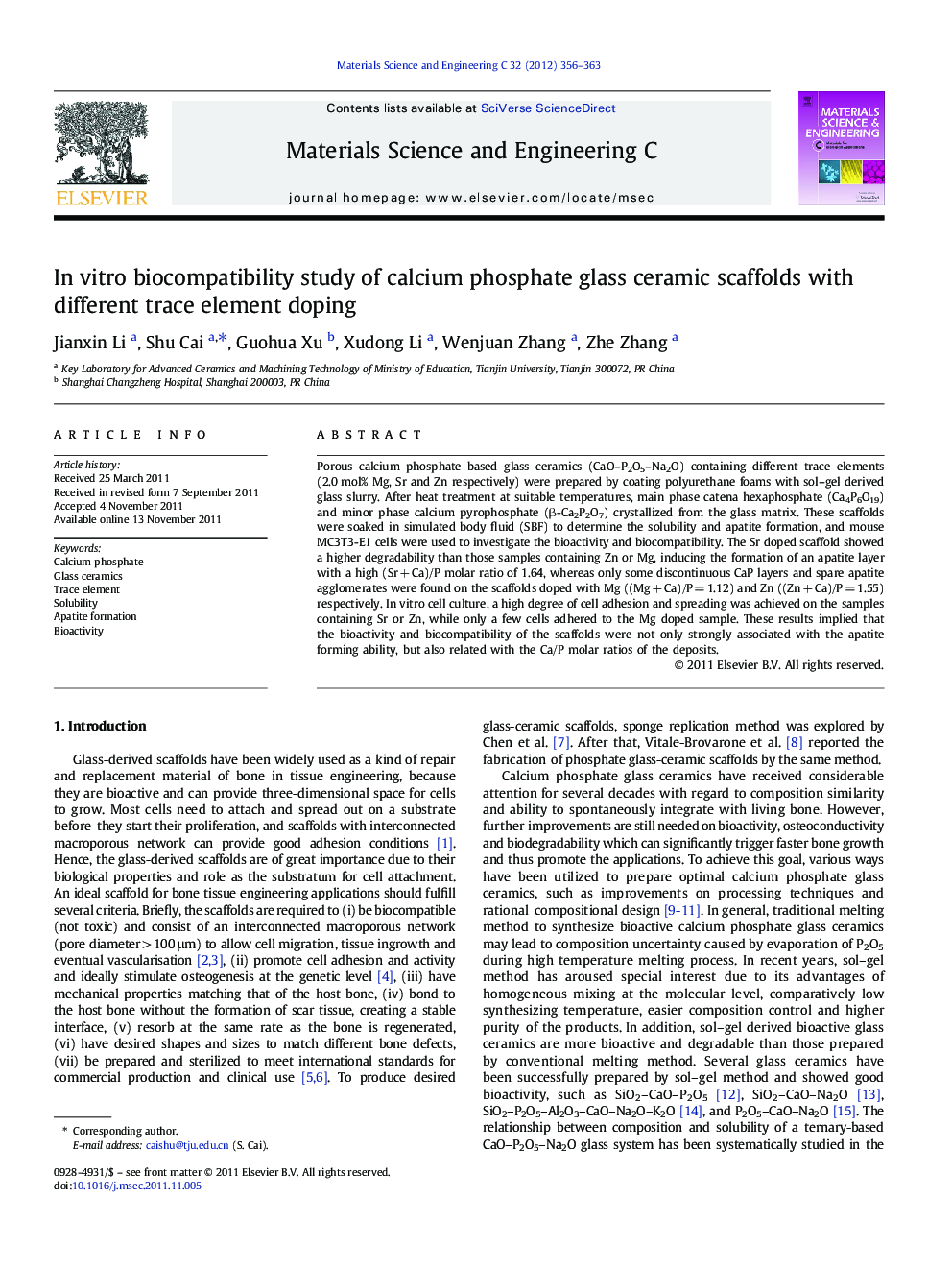| کد مقاله | کد نشریه | سال انتشار | مقاله انگلیسی | نسخه تمام متن |
|---|---|---|---|---|
| 1429591 | 987176 | 2012 | 8 صفحه PDF | دانلود رایگان |

Porous calcium phosphate based glass ceramics (CaO–P2O5–Na2O) containing different trace elements (2.0 mol% Mg, Sr and Zn respectively) were prepared by coating polyurethane foams with sol–gel derived glass slurry. After heat treatment at suitable temperatures, main phase catena hexaphosphate (Ca4P6O19) and minor phase calcium pyrophosphate (β-Ca2P2O7) crystallized from the glass matrix. These scaffolds were soaked in simulated body fluid (SBF) to determine the solubility and apatite formation, and mouse MC3T3-E1 cells were used to investigate the bioactivity and biocompatibility. The Sr doped scaffold showed a higher degradability than those samples containing Zn or Mg, inducing the formation of an apatite layer with a high (Sr + Ca)/P molar ratio of 1.64, whereas only some discontinuous CaP layers and spare apatite agglomerates were found on the scaffolds doped with Mg ((Mg + Ca)/P = 1.12) and Zn ((Zn + Ca)/P = 1.55) respectively. In vitro cell culture, a high degree of cell adhesion and spreading was achieved on the samples containing Sr or Zn, while only a few cells adhered to the Mg doped sample. These results implied that the bioactivity and biocompatibility of the scaffolds were not only strongly associated with the apatite forming ability, but also related with the Ca/P molar ratios of the deposits.
Figure optionsDownload as PowerPoint slideHighlights
► We studied the biocompatibility of scaffolds with different trace element doping.
► The Sr doped glass ceramic was more soluble than those doped with Mg or Zn.
► Apatite layer with a high (Sr + Ca)/P molar ratio of 1.64 formed on Sr doped sample.
► Surfaces of Mg doped scaffold covered by precipitates ((Mg + Ca)/P = 1.12) were labile.
► Sr and Zn favored cells, but Mg was toxic for the labile surfaces and drop of pH.
Journal: Materials Science and Engineering: C - Volume 32, Issue 2, 1 March 2012, Pages 356–363